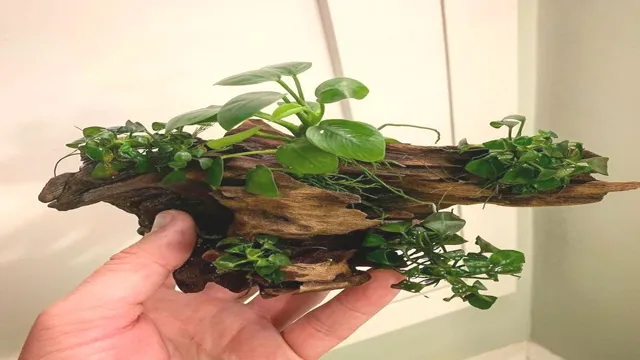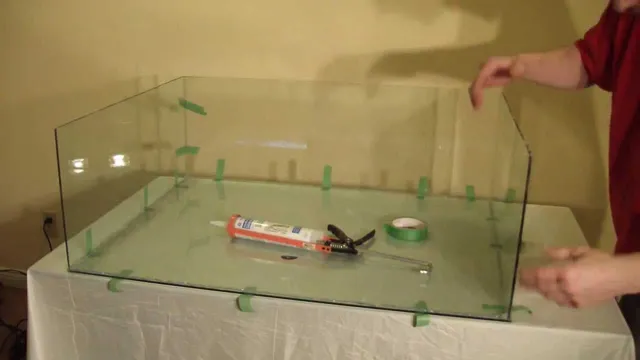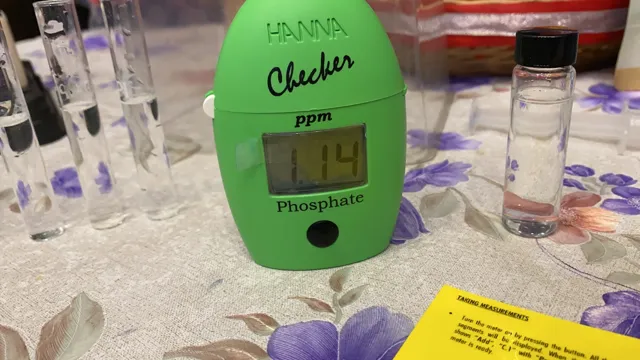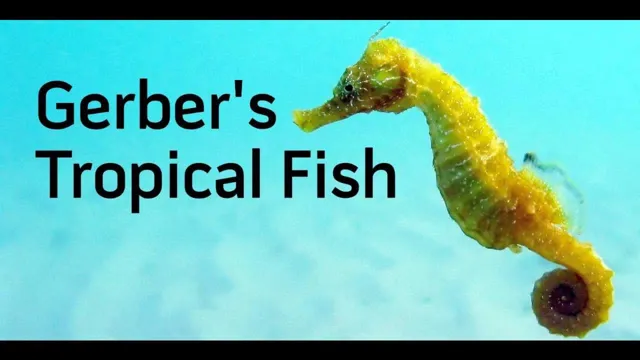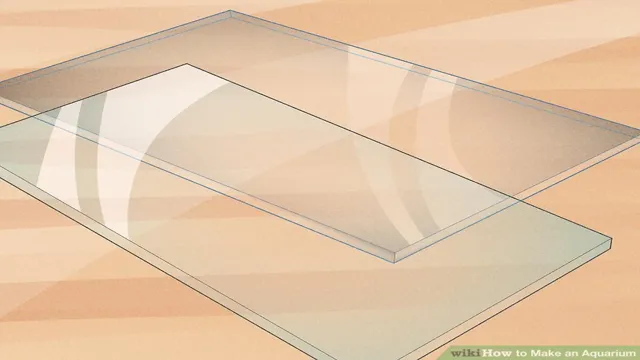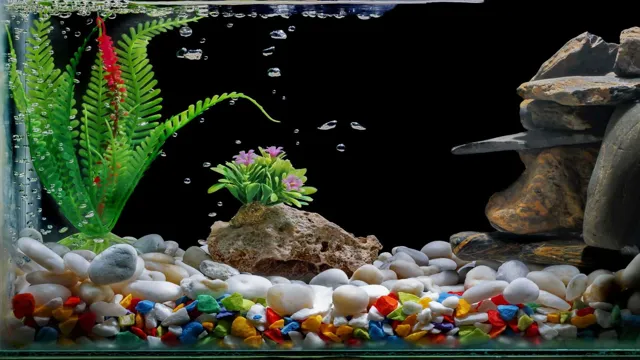If you’re looking to add some new greenery to your aquarium, gluing plants to driftwood can be a great option. Not only does it provide a natural and aesthetically pleasing look, but it can also be beneficial for the health of your aquatic environment. However, getting plants to stay put on driftwood can be a tricky task.
Luckily, we’ve got some tips to make the process a whole lot easier. In this article, we’ll be discussing the step-by-step process of how to glue aquarium plants to driftwood. With a little bit of patience and some know-how, you’ll have a stunning underwater landscape in no time.
Materials and Tools Needed
When it comes to decorating your aquarium with real or artificial plants, driftwood is a popular option for creating a natural-looking aquatic environment. However, it can be tricky to get the plants to stay in place on the driftwood. That’s where aquarium-safe adhesive comes in handy.
To glue aquarium plants to driftwood, you’ll need a few materials and tools. First, choose an aquarium-safe adhesive like cyanoacrylate gel, epoxy, or silicone. You’ll also need a small brush or applicator to apply the adhesive, and a pair of scissors or pruning shears to trim the plants if needed.
It’s important to choose plants that are compatible with the type of adhesive you are using and that are appropriate for your aquarium’s environment. With these materials and tools, you can easily attach plants to your driftwood and create a beautiful, natural-looking underwater landscape that your fish will love.
Hot Glue Gun
When it comes to crafting or DIY projects, a hot glue gun is a must-have tool. To get started, you’ll need a hot glue gun, of course, as well as glue sticks. Make sure to use the appropriate glue sticks for your specific hot glue gun as they come in different sizes and types.
Additionally, you may want to have a pair of gloves to protect your hands from potential burns, as well as a protective surface to work on, such as a piece of cardboard or a crafting mat. Other tools you may find useful include a pair of scissors, a ruler or measuring tape, and a pencil for marking measurements or cutting lines. With these materials and tools on hand, you’ll be ready to tackle all sorts of hot glue gun projects.
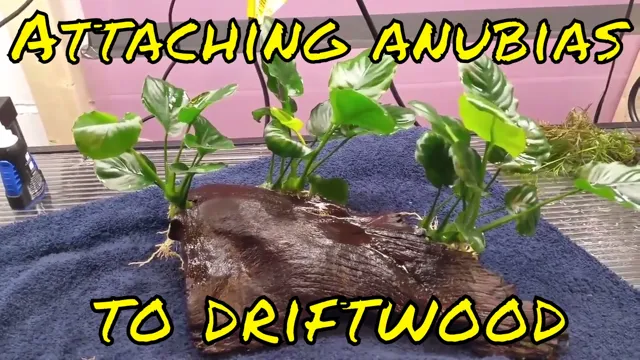
Hot Glue Sticks
When it comes to working with hot glue sticks, there are a few basic materials and tools that you’ll need. Firstly, you’ll need a hot glue gun, which is the tool used to melt the glue sticks and apply them to your project. There are many different types of hot glue guns available, so it’s important to choose one that is suited to the type of project you are working on.
Additionally, you’ll need to have some hot glue sticks on hand. These come in a variety of sizes and colors, and the type you choose will depend on the materials you are working with and the final look you are trying to achieve. Other helpful tools include a pair of scissors, which can be used to cut the hot glue sticks to the desired length, and a ruler or tape measure to ensure that your project is accurate and precise.
By having these materials and tools on hand, you’ll be well equipped to tackle any hot glue project that comes your way!
Driftwood
When it comes to creating driftwood art, the materials and tools you need are quite simple. Of course, the most important item would be driftwood itself, which can be found on beaches, rivers, or lakeshores. Once you have found the right pieces of driftwood, you will need some basic tools like sandpaper to smooth out any rough surfaces, a saw to cut the wood to the desired shape and size, and a drill to create holes if needed.
For those who want to take their driftwood art to the next level, a wood-burning tool can be used to create intricate designs and patterns on the wood. But the great thing about driftwood art is that you don’t necessarily need any fancy tools or materials to create something beautiful. With just a few basic pieces of equipment and a little bit of creativity, you can make stunning pieces of art that showcase the natural beauty of the driftwood.
So gather your tools and get ready to let your imagination run wild with this unique and versatile material!
Aquarium Plants
Aquarium plants are a great addition to any aquarium set-up, as they provide a natural aesthetic and can help to oxygenate the water. However, before you start adding plants to your tank, you’ll need to gather a few materials and tools. First and foremost, you’ll need the plants themselves! When purchasing plants, make sure to choose ones that are compatible with your tank’s environment and any fish or other aquatic animals you may have.
You’ll also need a substrate, such as gravel or sand, to plant the roots in. Other materials you may want to consider include fertilizers, CO2 tanks, and specialized lighting. In terms of tools, you’ll need scissors or pruning shears for trimming the plants as needed, as well as planting tweezers or tongs to carefully place the plants in their new homes. (See Also: How to Cycle Aquarium with Fish Quickly: A Beginner’s Guide)
With the right materials and tools, you can create a beautiful and healthy environment for your aquatic pets!
Preparing the Driftwood and Aquarium Plants
If you’re looking to create an eye-catching aquarium, one excellent way to do it is to incorporate driftwood and plants. Gluing aquarium plants to your driftwood can be an excellent way to create a natural appearance that will impress your guests. To start, you’ll need to choose the right type of aquarium plants for your project, such as Java Fern or Anubias.
Once you’ve selected your plants, you’ll need to clean and prepare both the plants and the driftwood. You can use water and a brush to clean the driftwood, carefully removing any dirt or debris. Next, attach the plant to the driftwood using aquarium-safe glue.
Be sure to choose a non-toxic, durable adhesive that won’t harm your fish or plants. You can also use tie wraps or cotton thread to tie your plants to the driftwood. With some patience and care, you can create a stunning aquarium that will be the envy of all your friends.
Clean and Dry the Driftwood
Before introducing driftwood into your aquarium, it’s essential that you clean and dry it first. This process is easy to do and helps to prevent the introduction of any harmful substances into your tank. Begin by removing any loose debris or dirt from the wood using a soft-bristled brush or toothbrush.
Once you’ve done this, rinse the driftwood thoroughly under running water to eliminate any remaining dirt. After cleaning, you need to dry the wood completely. The easiest way to do this is to let it air dry outside under the sun for a week or so.
This helps to ensure that the wood is completely dry, free of moisture, and bacteria, which is crucial before introducing it to your tank. Submerge the wood in a bucket of water before putting it in your tank makes sure it won’t float once you add it to your aquarium. Overall, taking the necessary steps to prepare your driftwood will provide a natural and interesting addition to your aquarium while ensuring the safety of its inhabitants.
Cut and Clean the Aquarium Plants
When preparing your aquarium plants and driftwood, an essential step is to cut and clean the plants. Begin by removing any dead and decaying leaves or stems using scissors or sharp pruning shears. It’s crucial to eliminate any affected plant material as it can lead to the spread of disease in your aquarium.
Avoid using regular household scissors as they might crush the plant. Clean the plants under running tap water and check for any pests or snails that could harm your aquarium ecosystem. You can also soak plants in a mix of water and bleach to kill any bacteria or parasites.
After rinsing, let the plants dry before placing them into the aquarium. Remember, healthy and well-maintained plants will improve the aesthetics of your aquarium and benefit the fish in it.
Arrange the Plants on the Driftwood
To create a stunning natural display in your aquarium, start by preparing the driftwood and aquarium plants. Begin by cleaning the driftwood thoroughly with warm water and a soft brush to remove any dirt or debris. Soaking the driftwood in water for a few days or boiling it can also help release any tannins that may discolor the water.
Once the driftwood is clean and ready, it’s time to start arranging the aquarium plants. Arrange taller plants at the back of the driftwood and shorter plants towards the front, creating depth and dimension. Be sure to space the plants out evenly to avoid overcrowding and leave enough room for the plants to grow.
Consider using a variety of plant species to add texture and color to your display. Once everything is arranged to your liking, gently push the plant stems into the driftwood crevices and let them settle for a few days before adding water. With proper preparation and arrangement, your aquarium will be the perfect natural habitat for your aquatic pets.
Gluing the Aquarium Plants to the Driftwood
If you are looking for a way to add some greenery and visual interest to your aquarium, attaching live plants to driftwood can be a beautiful natural option. So, how do you glue aquarium plants to driftwood? First, you will need to choose the right type of glue. Some aquarists use super glue gel, while others prefer cyanoacrylate-based glues or fish-safe silicone. (See Also: How to Make Driftwood for an Aquarium: A Step-by-Step Guide for Beginner Aquarists)
Then, you will want to select the plants that will work well with driftwood, such as java ferns or anubias. Once you have everything ready, carefully apply a small amount of glue to the bottom of your plant and press it onto the driftwood. Be sure to hold it in place for a few moments until the glue has had a chance to set.
Repeat the process with each plant until you have achieved the desired look. With a little patience and care, you can easily create a stunning aquatic landscape with glued aquarium plants on driftwood.
Heat Up the Glue Gun
When it comes to creating a beautiful aquascape in your aquarium, attaching plants to your driftwood is an essential step. To start, heat up your glue gun and get ready to attach those plants securely to the driftwood. Make sure to choose a non-toxic glue that won’t harm your aquatic pets.
Begin by applying a small amount of glue to the base of the plant, ensuring you don’t cover the roots completely. Next, carefully place the plant onto the driftwood in the desired position, holding it in place until the glue sets. Repeat this step with each plant until you have achieved your desired look.
Remember, it’s important to ensure your plants are securely fastened to prevent any damage or potential hazards in your aquarium. With a little patience and practice, gluing aquarium plants to your driftwood is an easy and rewarding step in creating a stunning underwater landscape.
Apply the Hot Glue to the Driftwood
When it comes to creating a beautiful underwater landscape, gluing aquarium plants to driftwood is a popular option. This process allows for unique and natural-looking creations that can enhance the beauty of any aquarium. Applying hot glue to the driftwood may seem like a straightforward process, but it requires careful consideration.
First, ensure that the driftwood is clean and dry before beginning. Then, apply the hot glue to the base of the plant and press it firmly onto the driftwood. Be careful not to apply too much glue or to burn yourself with the hot glue gun.
Remember to take your time and be patient, as rushing can lead to mistakes and a less-than-optimal end result. With a little practice and attention to detail, gluing aquarium plants to driftwood can be a simple and satisfying process that yields beautiful results.
Attach the Aquarium Plants to the Glue
When it comes to creating a beautiful aquascape, attaching aquarium plants to driftwood can really enhance the overall look of your tank. The best way to do this is by using glue to secure the plants to the driftwood. But before you start, make sure your hands are clean and dry to avoid any contamination.
Gather the aquarium plants you want to attach and cut them to size, leaving enough stem to fit into the crevices of the driftwood. Then, take a small amount of glue and apply it to the stem of the plant. Carefully place the plant onto the driftwood and press down firmly for a few seconds to ensure it sticks.
Repeat this process with each plant, being careful not to overcrowd the driftwood. Once you’re done, give the glue time to dry completely before placing the driftwood into the tank. By gluing your aquarium plants to the driftwood, you can create a unique and stunning aquascape that’s sure to impress.
Hold the Plants in Place Until the Glue Dries
When it comes to creating an aquarium that’s as beautiful as it is functional, gluing aquarium plants to driftwood is a great way to create an eye-catching scene. To get started, you’ll want to choose a type of glue that’s safe for use in your aquarium. Aquarium-safe epoxy or cyanoacrylate are your best options.
Once you’ve got your glue ready, place the plant on the driftwood and hold it in place until the glue dries. Depending on the size and weight of the plant, this could take anywhere from a few minutes to an hour or more. It’s important to be patient and not rush the process, as you don’t want the plant to become dislodged once you’ve finished.
With a bit of patience and the right tools, you can create a stunning aquatic display that will be the envy of all who see it. (See Also: How to Grow Algae for Aquarium Algae Eaters: A Comprehensive Guide)
Final Thoughts
In conclusion, gluing aquarium plants to driftwood is a simple and effective way to create a beautiful aquascape. By following the steps mentioned above, you can ensure that your plants are securely attached to the wood, while also promoting healthy growth for your aqua flora. Remember to choose the right adhesive, trim the plants, and let the glue dry completely before adding them to your aquarium.
With a little time and effort, you can transform a plain piece of driftwood into a stunning centerpiece for your underwater world. So why not try gluing aquarium plants to driftwood today and see the difference it can make in your aquascape!
Conclusion
In conclusion, gluing aquarium plants to driftwood is a delicate art that requires patience, precision and creativity. It’s like putting together a miniature underwater garden in your aquarium, which can not only enhance the visual appeal of your aquarium but also provide a natural environment for your aquatic pets. Remember to choose the right type of glue, clean and dry the surfaces properly, and arrange the plants in a way that looks both aesthetically pleasing and biologically functional.
With some practice and experimentation, you can become a master gardener in your own aquatic world. So, grab your glue gun and let your imagination run wild – your fishy friends will thank you for it!”
FAQs
What types of adhesives are suitable for attaching aquarium plants to driftwood?
Silicone sealant, super glue, and even fishing line can be used to attach aquarium plants to driftwood.
Do I need to soak the driftwood before attaching plants to it?
Yes, it is recommended to soak the driftwood for several days before using it in your aquarium. This will help remove any tannins or other substances that may be harmful to your fish.
Can all types of aquarium plants be attached to driftwood?
Generally, most freshwater aquarium plants can be attached to driftwood. However, it’s best to do some research on the specific plant you wish to attach to ensure that it’s suitable for this type of use.
What is the best way to attach plants to driftwood without damaging them?
The best way to attach plants is to gently wrap the plant roots around the driftwood or use fishing line to tie the plant in place. Be careful not to damage the plant during this process.
How do I ensure that the plants stay attached to the driftwood?
It’s important to use a strong adhesive such as a silicone sealant or super glue to attach the plant to the driftwood. Additionally, regularly checking the plants and reattaching them as necessary will help ensure they stay in place.
Can I attach moss to driftwood in the same way I attach other aquarium plants?
Yes, moss can be attached to driftwood in the same way as other aquarium plants. However, it’s important to regularly trim the moss to encourage healthy growth and prevent it from overtaking your aquarium.
How long does it take for the plants to attach to the driftwood?
This can vary depending on the type of adhesive used and the type of plant, but it typically takes a few days to a week for plants to fully attach to the driftwood.

